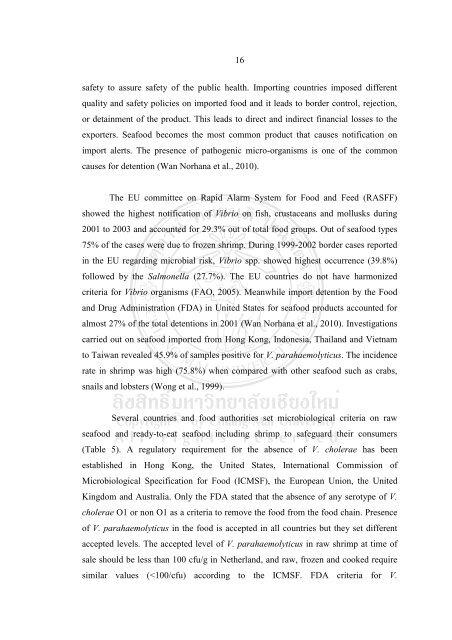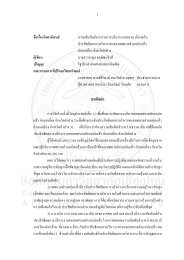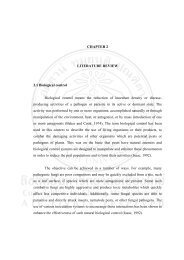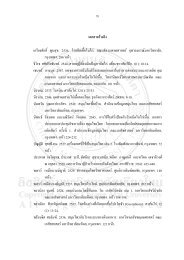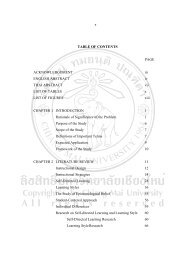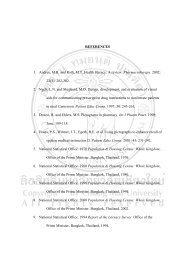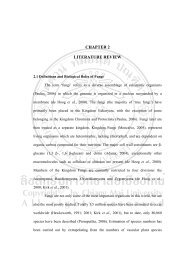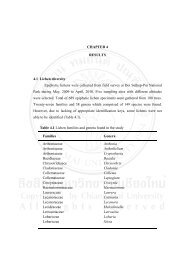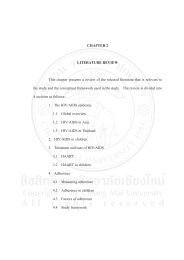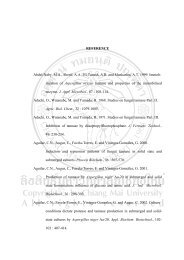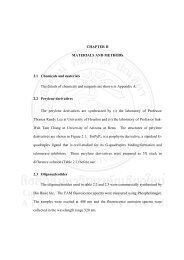prevalence and molecular characteristics of vibrio species in pre ...
prevalence and molecular characteristics of vibrio species in pre ...
prevalence and molecular characteristics of vibrio species in pre ...
Create successful ePaper yourself
Turn your PDF publications into a flip-book with our unique Google optimized e-Paper software.
16<br />
safety to assure safety <strong>of</strong> the public health. Import<strong>in</strong>g countries imposed different<br />
quality <strong>and</strong> safety policies on imported food <strong>and</strong> it leads to border control, rejection,<br />
or deta<strong>in</strong>ment <strong>of</strong> the product. This leads to direct <strong>and</strong> <strong>in</strong>direct f<strong>in</strong>ancial losses to the<br />
exporters. Seafood becomes the most common product that causes notification on<br />
import alerts. The <strong>pre</strong>sence <strong>of</strong> pathogenic micro-organisms is one <strong>of</strong> the common<br />
causes for detention (Wan Norhana et al., 2010).<br />
The EU committee on Rapid Alarm System for Food <strong>and</strong> Feed (RASFF)<br />
showed the highest notification <strong>of</strong> Vibrio on fish, crustaceans <strong>and</strong> mollusks dur<strong>in</strong>g<br />
2001 to 2003 <strong>and</strong> accounted for 29.3% out <strong>of</strong> total food groups. Out <strong>of</strong> seafood types<br />
75% <strong>of</strong> the cases were due to frozen shrimp. Dur<strong>in</strong>g 1999-2002 border cases reported<br />
<strong>in</strong> the EU regard<strong>in</strong>g microbial risk, Vibrio spp. showed highest occurrence (39.8%)<br />
followed by the Salmonella (27.7%). The EU countries do not have harmonized<br />
criteria for Vibrio organisms (FAO, 2005). Meanwhile import detention by the Food<br />
<strong>and</strong> Drug Adm<strong>in</strong>istration (FDA) <strong>in</strong> United States for seafood products accounted for<br />
almost 27% <strong>of</strong> the total detentions <strong>in</strong> 2001 (Wan Norhana et al., 2010). Investigations<br />
carried out on seafood imported from Hong Kong, Indonesia, Thail<strong>and</strong> <strong>and</strong> Vietnam<br />
to Taiwan revealed 45.9% <strong>of</strong> samples positive for V. parahaemolyticus. The <strong>in</strong>cidence<br />
rate <strong>in</strong> shrimp was high (75.8%) when compared with other seafood such as crabs,<br />
snails <strong>and</strong> lobsters (Wong et al., 1999).<br />
Several countries <strong>and</strong> food authorities set microbiological criteria on raw<br />
seafood <strong>and</strong> ready-to-eat seafood <strong>in</strong>clud<strong>in</strong>g shrimp to safeguard their consumers<br />
(Table 5). A regulatory requirement for the absence <strong>of</strong> V. cholerae has been<br />
established <strong>in</strong> Hong Kong, the United States, International Commission <strong>of</strong><br />
Microbiological Specification for Food (ICMSF), the European Union, the United<br />
K<strong>in</strong>gdom <strong>and</strong> Australia. Only the FDA stated that the absence <strong>of</strong> any serotype <strong>of</strong> V.<br />
cholerae O1 or non O1 as a criteria to remove the food from the food cha<strong>in</strong>. Presence<br />
<strong>of</strong> V. parahaemolyticus <strong>in</strong> the food is accepted <strong>in</strong> all countries but they set different<br />
accepted levels. The accepted level <strong>of</strong> V. parahaemolyticus <strong>in</strong> raw shrimp at time <strong>of</strong><br />
sale should be less than 100 cfu/g <strong>in</strong> Netherl<strong>and</strong>, <strong>and</strong> raw, frozen <strong>and</strong> cooked require<br />
similar values (


